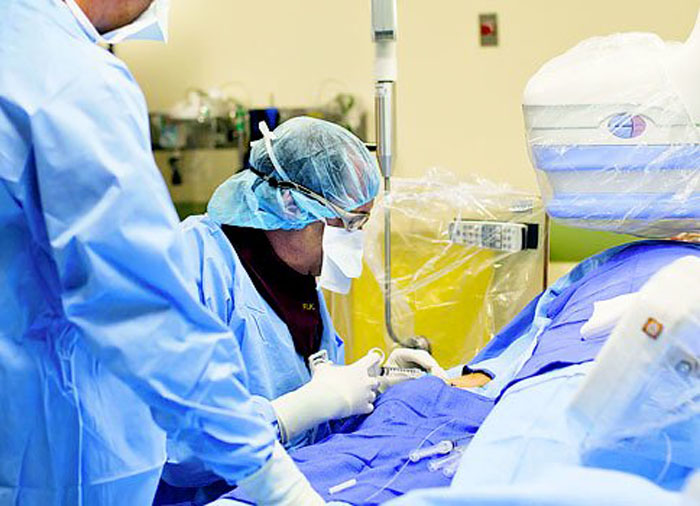Archbold program in state’s top 10
Published 4:27 pm Saturday, December 18, 2010

- Archbold Interventional Cardiologist Richard A. Kerensky, M.D., performs a procedure in Archbold’s Heart and Vascular Center.
Georgia Trend Magazine has ranked Archbold Memorial Hospital’s Coronary Intervention Program in the top 10 of Georgia hospitals, and the highest ranked program south of Atlanta in the state.
Trending
The rankings were compiled by HealthGrades, Inc., a leading health care ratings organization.
HealthGrades’ ratings reflected the track record of patient outcomes at hospitals in the form of mortality and complication rates. HealthGrades rates hospitals independently based on data received by the federal government. No hospital can opt in or out of being rated.
Top-performing hospitals had dramatically lower mortality rates than other hospitals, according to the study.
Coronary intervention, performed during a cardiac catheterization, is a non-surgical procedure performed in the cardiac catheterization laboratory by an interventional cardiologist and a cardiovascular team of nurses and technicians. The procedure utilizes special catheters that are used to ‘open’ blocked
arteries that supply blood to the heart.
Archbold has two board certified interventional cardiologists on staff, Richard A. Kerensky, MD and Clay B. Sizemore, MD.
Trending
In 2006, the first year of the coronary intervention program at Archbold, the hospital was one of ten hospitals in Georgia awarded to participate in the Georgia Department of Community Health’s Cardiovascular Patient Outcomes Research Team clinical trial (C-PORT medical trial). “It’s rewarding to be in the top 10 within the first 5 years of offering coronary intervention procedures at Archbold,” said Dr. Richard Kerensky.
Coronary intervention can be performed electively, treating patients experiencing symptoms of coronary artery disease, including chest pain or shortness of breath with exertion. Often, though coronary intervention is used in emergent situations to abort an acute heart attack, and in some cases may prevent death.
“Based on third quarter core measures and Joint Commission data, Archbold achieved door-to-balloon times (the time it takes to treat a heart attack patient from the moment he or she arrives in the emergency department to the moment their blocked artery is open) within 90 minutes or less on 100% of our patients,” said Amy Griffin, MSN, Director of Heart and Vascular Services at Archbold.
“It’s rewarding to know that we can provide a life-saving procedure to the patients in our community, and it’s even more rewarding knowing that we are the best at what we do,” said Griffin.
“When treating a heart attack, time is critical,” said Kerensky. “Patients eligible for cardiac catheterization ideally undergo the procedure within 90 minutes of entering the emergency room. All departments should work together to make this happen.” Delays in treating a heart attack increase the likelihood and amount of possible permanent cardiac muscle damage.
Kerensky credits the hard work and team collaboration efforts of EMS, Archbold’s Emergency Department and Loudermilk Heart and Vascular Center, as well as the catheterization laboratory team.
Dr. B. Clay Sizemore, the newest member of the Coronary Intervention team, said, “I came to Archbold this year to help provide the best cardiac services possible to the residents of this region. From the beginning, I knew I was joining a superior team. Every Archbold physician, nurse, clinician, and support staff member is totally focused on one thing: providing our patients with the best medical care possible.”
“It’s very important for residents in our community to understand the quality of Archbold’s heart services,” said Perry Mustian, President and CEO of Archbold Medical Center. “We really have the best of both worlds—leading edge technology and medical expertise and the quality, compassionate care of a community hospital.”





